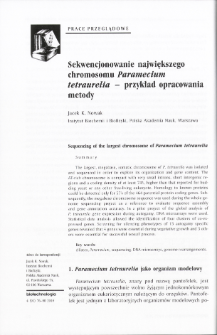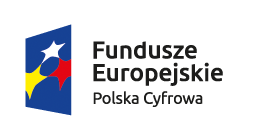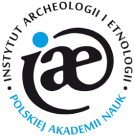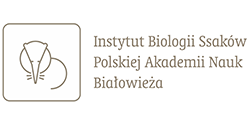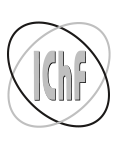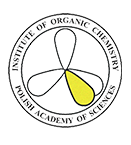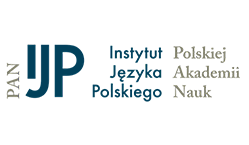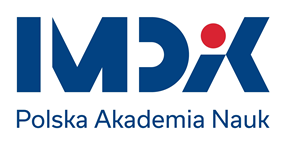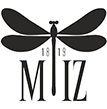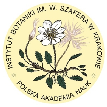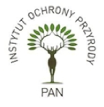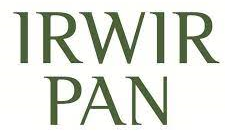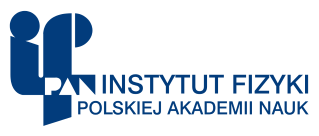- Wyszukaj w całym Repozytorium
- Piśmiennictwo i mapy
- Archeologia
- Baza Młynów
- Nauki przyrodnicze
Wyszukiwanie zaawansowane
Wyszukiwanie zaawansowane
Wyszukiwanie zaawansowane
Wyszukiwanie zaawansowane
Wyszukiwanie zaawansowane

Obiekt
Tytuł: Sekwencjonowanie największego chromosomu Paramecium tetraurelia - przykład opracowania metody
Inny tytuł:
Journal of Biotechnology, Computational Biology and Bionanotechnology
Wydawca:
Komitet Biotechnologii PAN ; Instytut Chemii Bioorganicznej PAN
Opis:
Abstrakt:
The largest, megabase, somatic chromosome of P. tetraurelia was isolated and sequenced in order to explore its organization and gene content. The AT-rich chromosome is compact with very small introns, short intergenic regions and a coding density of at least 74%, higher than that reported for budding yeast or any other free-living eukaryote. Homology to known proteins could be detected only for 57% of the 464 potential protein coding genes. Subsequently, the megabase chromosome sequence was used during the whole genome sequencing project as a reference to evaluate sequence assembly and gene annotation accuracy. In a pilot project of the global analysis of P. tetraurelia gene expression during autogamy, DNA microarrays were used. Statistical data analysis allowed the identification of four clusters of co-ex- pressed genes. Screening for silencing phenotypes of 15 autogamy specific genes revealed that 4 genes were essential during vegetative growth and 3 others were essential for successful sexual process.
Bibliografia:
BeissonJ., Betermier M., Bre M.-H., Cohen J., Duharcourt S., Duret L., Kiing C., Malinsky S., Meyer E., Preer J. R. jr, Sperling L., (2010), Cold Spring Harb Protoc, 2010doi:I0.1101/pdb.emol40
Caron F., Meyer E., (1985), Nature, 314(6007), 185-188.
Preer J. R. jr., Preer L. B., Rudman B. M., Barnett A. J., (1985), Nature, 314(6007), 188-190.
Greider C. W., Blackburn E. H., (1985), Celi, 43(2 Pt 1), 405-413.
Jaillon O., Bouhouche K., Gout J.. Aury J., Noel B., Saudemont B., Nowacki M., Serrano V., Porcel B., Segurens B., Le Mouel A., Lepere G., Schachter V., Betermier M., Cohen J., Wincker P., Sperling L., Duret L., Meyer E., (2008), Nature, 451 (7176), 359-362.
Duharcourt S., Lepere G., Meyer E., (2009), Trends Genet., 25(8), 344-350.
Gratias A., Betermier M., (2001), Biochimie, 83, 1009-1022.
Yao M. C., Duharcourt S., Chalker D. L., (2002), Mobile DNA II, Eds. Craig N. L., Craigie R., Gellert M., Lambowitz A. M., ASM Press, Washington DC.
Dessen P., Zagulski M., Gromadka R., Plattner H., Kissmehl R., Meyer E., Betermier M., Schultz J. E., Linder J. U., Pearlman R. E., Kung C., Forney J., Satir B. H., van Houten j. L., Keller A. M., Froissard M., Sperling L., Cohen J., (2001), Trends Genet., 17(6), 306-308.
Sperling L., Dessen P., Zagulski M., Pearlman R. E., Migdalski A., Gromadka R., Froissard M., Keller A. M., Cohen J., (2002), Eukaryot. Celi., 3, 341-352.
Staden R., (1996), Mol. Biotechnol., 5, 233-241.
Tettelin H., Radune D., Kasif S., Khouri H., Salzberg S., (1999), Genomics, 62, 500-507.
Forney J., Rodkey K., (1992), Nucleic Acids Res., 20, 5397-5402.
Altschul S. F., Gish W., Miller W., Myers E. W., Lipman D.J., (1990), J. Mol. Biol., 215, 403-410.
Salzberg S., Pertea M., Delcher A., Gardner M., Tettelin FI., (1999), Genomics, 59, 24-31.
Rutherford K., ParkhillJ., CrookJ., Florsnell T., Rice P., Rajandream M. A., Barrell B., Bioinformatics, (2000), 16, 944-945.
Zagulski M., Nowak J. K., Le Mouel A., Nowacki M., Migdalski A., Gromadka R., Noel B., Blanc 1., De- ssen P., Wincker P., Keller A. M., Cohen j., Meyer E., Sperling L., (2004), Curr. Biol., 15, 1397-1404.
AuryJ. M., Jaillon O., Duret L., Noel B., jubin C., Porcel B. M., Segurens B., Daubin V., Anthouard V., Aiach N., Arnaiz 0., Billaut A., Beisson j., Blanc 1., Bouhouche K., Camara F., Duharcourt S., Guigo R., Gogendeau D., Katinka M., Keller A.-M., Kissmehl R., Klotz C., Koll F., Le Mouel A., Lepere G., Malinsky S., Nowacki M., Nowak j. K., Plattner FI., Poulain J., Ruiz F., Serrano V., Zagulski M., De- ssen P., Betermier M., Weissenbach j., Scarpelli C., Schachter V., Sperling L., Meyer E., Cohen J., Wincker P., (2006), Nature, 444 (7116), 171-178.
Arnaiz O., Cain S., Cohen J., Sperling L., (2007), Nucleic Acids Res., 35 (Database issue), D439-444.
Ohno S., (1970), Evolution by Gene Duplication, Ed. Allen 8; Unwin, London.
Carver T.J., Rutherford K. M., Berriman M., Rajandream M. A., Barrell B. G., ParkhillJ., (2005), 21, 3422-3423.
Lepere G., Nowacki M., Serrano V., Gout J.-F., Guglielmi G., Duharcourt S., Meyer E., (2009), Nucleic Acids Res., 37(3), 903-915.
Lepere G., Betermier M., Meyer E., Duharcourt S., (2008), Genes Dev., 22(11), 1501-1512.
Ponting C. P., Oliver P. L, Reik W., (2009), Cell, 136, 629-641.
Dudley D. D., Chaudhuri J., Bassing C. FI., Alt F. W., (2005), Adv. Immunol., 86, 43-112.
Galvani A., Sperling L., (2001), Nucleic Acids Res., 29, 4387-4394.
Baudry C., Malinsky S., Restituito M., Kapusta A., Rosa S., Meyer E., Betermier M., (2009), Genes Dev., 23, 2478-2483.
Czasopismo/Seria/cykl:
Biotechnologia, vol.91, 4 (2010)-.
Tom:
Zeszyt:
Strona pocz.:
Strona końc.:
Szczegółowy typ zasobu:
Format:
Identyfikator zasobu:
oai:rcin.org.pl:69216 ; IChB B-86
Źródło:
Biblioteka Instytutu Chemii Bioorganicznej PAN
Język:
Język streszczenia:
Zakres czasowy:
Prawa:
Licencja Creative Commons Uznanie autorstwa-Na tych samych warunkach 4.0
Zasady wykorzystania:
Digitalizacja:
Instytut Chemii Bioorganiczneji Polskiej Akademii Nauk
Lokalizacja oryginału:
Instytut Chemii Bioorganiczneji Polskiej Akademii Nauk
Dofinansowane ze środków:
Dostęp:
Kolekcje, do których przypisany jest obiekt:
- Repozytorium Cyfrowe Instytutów Naukowych > Kolekcje Partnerów > Instytut Chemii Bioorganicznej PAN > Artykuły
- Repozytorium Cyfrowe Instytutów Naukowych > Piśmiennictwo > Czasopisma/Artykuły
Data ostatniej modyfikacji:
2 paź 2020
Data dodania obiektu:
8 mar 2019
Liczba pobrań / odtworzeń:
1233
Wszystkie dostępne wersje tego obiektu:
https://rcin.org.pl./publication/90466
Wyświetl opis w formacie RDF:
Wyświetl opis w formacie RDFa:
Wyświetl opis w formacie OAI-PMH:
| Nazwa wydania | Data |
|---|---|
| Sekwencjonowanie największego chromosomu Paramecium tetraurelia - przykład opracowania metody | 2 paź 2020 |
Obiekty Podobne
Borkowska, Bożenna
Ziółkowski, Piotr Babula- Skowrońska, Danuta Kaczmarek, Małgorzata Cieśla, Agata Sadowski, Jan
Gasior, E. Augustyniak, J. Lorkiewicz, Z. Obermann, H.

 INSTYTUT ARCHEOLOGII I ETNOLOGII POLSKIEJ AKADEMII NAUK
INSTYTUT ARCHEOLOGII I ETNOLOGII POLSKIEJ AKADEMII NAUK
 INSTYTUT BADAŃ LITERACKICH POLSKIEJ AKADEMII NAUK
INSTYTUT BADAŃ LITERACKICH POLSKIEJ AKADEMII NAUK
 INSTYTUT BADAWCZY LEŚNICTWA
INSTYTUT BADAWCZY LEŚNICTWA
 INSTYTUT BIOLOGII DOŚWIADCZALNEJ IM. MARCELEGO NENCKIEGO POLSKIEJ AKADEMII NAUK
INSTYTUT BIOLOGII DOŚWIADCZALNEJ IM. MARCELEGO NENCKIEGO POLSKIEJ AKADEMII NAUK
 INSTYTUT BIOLOGII SSAKÓW POLSKIEJ AKADEMII NAUK
INSTYTUT BIOLOGII SSAKÓW POLSKIEJ AKADEMII NAUK
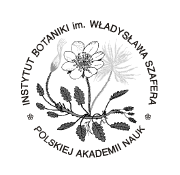 INSTYTUT CHEMII FIZYCZNEJ PAN
INSTYTUT CHEMII FIZYCZNEJ PAN
 INSTYTUT CHEMII ORGANICZNEJ PAN
INSTYTUT CHEMII ORGANICZNEJ PAN
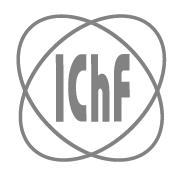 INSTYTUT FILOZOFII I SOCJOLOGII PAN
INSTYTUT FILOZOFII I SOCJOLOGII PAN
 INSTYTUT GEOGRAFII I PRZESTRZENNEGO ZAGOSPODAROWANIA PAN
INSTYTUT GEOGRAFII I PRZESTRZENNEGO ZAGOSPODAROWANIA PAN
 INSTYTUT HISTORII im. TADEUSZA MANTEUFFLA POLSKIEJ AKADEMII NAUK
INSTYTUT HISTORII im. TADEUSZA MANTEUFFLA POLSKIEJ AKADEMII NAUK
 INSTYTUT JĘZYKA POLSKIEGO POLSKIEJ AKADEMII NAUK
INSTYTUT JĘZYKA POLSKIEGO POLSKIEJ AKADEMII NAUK
 INSTYTUT MATEMATYCZNY PAN
INSTYTUT MATEMATYCZNY PAN
 INSTYTUT MEDYCYNY DOŚWIADCZALNEJ I KLINICZNEJ IM.MIROSŁAWA MOSSAKOWSKIEGO POLSKIEJ AKADEMII NAUK
INSTYTUT MEDYCYNY DOŚWIADCZALNEJ I KLINICZNEJ IM.MIROSŁAWA MOSSAKOWSKIEGO POLSKIEJ AKADEMII NAUK
 INSTYTUT PODSTAWOWYCH PROBLEMÓW TECHNIKI PAN
INSTYTUT PODSTAWOWYCH PROBLEMÓW TECHNIKI PAN
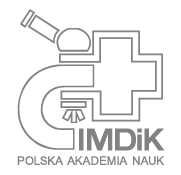 INSTYTUT SLAWISTYKI PAN
INSTYTUT SLAWISTYKI PAN
 SIEĆ BADAWCZA ŁUKASIEWICZ - INSTYTUT TECHNOLOGII MATERIAŁÓW ELEKTRONICZNYCH
SIEĆ BADAWCZA ŁUKASIEWICZ - INSTYTUT TECHNOLOGII MATERIAŁÓW ELEKTRONICZNYCH
 MUZEUM I INSTYTUT ZOOLOGII POLSKIEJ AKADEMII NAUK
MUZEUM I INSTYTUT ZOOLOGII POLSKIEJ AKADEMII NAUK
 INSTYTUT BADAŃ SYSTEMOWYCH PAN
INSTYTUT BADAŃ SYSTEMOWYCH PAN
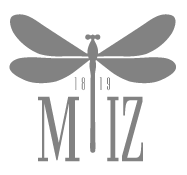 INSTYTUT BOTANIKI IM. WŁADYSŁAWA SZAFERA POLSKIEJ AKADEMII NAUK
INSTYTUT BOTANIKI IM. WŁADYSŁAWA SZAFERA POLSKIEJ AKADEMII NAUK
